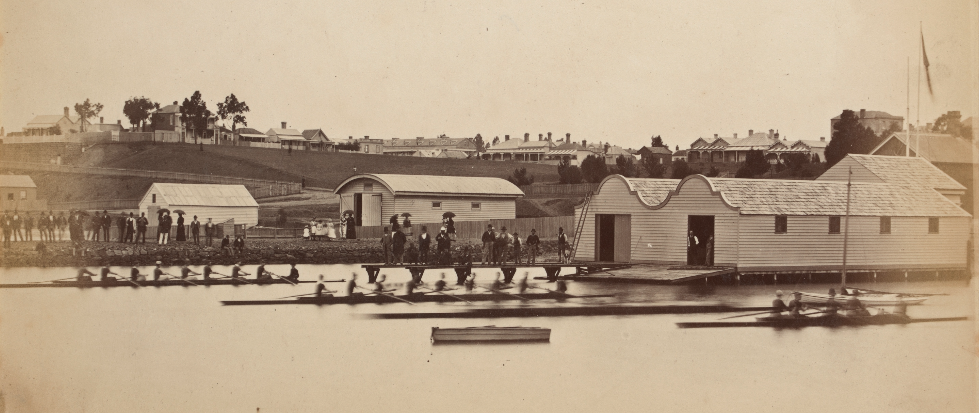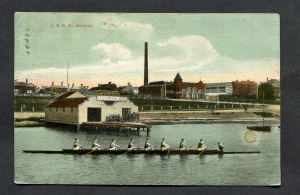
Hard to get your head around the entitlement of early Australian society’s upper class. Sport’s often considered a great leveller that brought the crusty cigar-chompers back to earth. But it’s taken some time.
Think toffs like W.G. Grace, considered the great grandfather of our cricketing institutions. Wouldn’t run himself, had a man who’d do that for him. Wouldn’t go out when he was out, either, like a sooky kid. People came to see him bat, not others bowl or umpire, he argued. “A shameless cheat,” Wisden wrote.
Not unlike some in the rowing fraternity as they looked to get Geelong’s first Barwon River regatta off the ground back in the 1870s. At issue was the awful danger that anyone who earned a living from manual labour might win. Too strong, too fit, for the supercilious ‘amateurs’ trying to stage the event.
Gold-leaf names from the Geelong roll call, notably Edward Lascelles, James Strachan, didn’t want any truck with competitors such as blacksmiths, carters, miners or quarrymen. They’d tolerate blokes with sedentary jobs, saddlers, printers and the likes, and that seemed a grandiose concession on their part.

Female rowers? Don’t be ridiculous. Come back in a hundred years.
That first river regatta drew a crowd of 3500 and the Corio Bay Rowing Club’s captain, George Upward, took out the maiden sculls. It was a neat two-finger salute to the Barwon Rowing Club, whose Lascelles and Strachan had tried to keep the CBRC rowers out of the competition.
The politics aren’t always evident behind the romantic-looking snapshots you’ll trip to as you cast through old Geelong’s rowing photo albums.
Fred Kruger’s gorgeous 1879 shot of the Corio Bay Rowing Club, with parasols and pretty Eastern Beach clifftop homes rising in the background, is as evocative an image of the old Pivot.
Likewise, the green-tinged Havelock-emblazoned CBRC postcard with the erstwhile Brougham St powerhouse behind. And club member portraits, boathouses, race crowds, crew shots, training sessions, building works, river sunsets, too.
But if you want a sniff of the social upheaval going on in the background, check out the club’s 150th anniversary tome by David Uren.
It’s loaded with images of rowers, regattas and reminiscences of the club, which was started in 1873 so working men on the Geelong docks could row on Corio Bay. It’s also a catalogue of the class distinctions of the day, as well as the social changes down the years.
Of course, there’s a fair showing of old names. Footballers such as Somers, Young and Brownlow. Administrators such as Belcher, Owen, Watt. Champions Upward, Garrard, Westendorf, Stanley, Sykes, Ramage, Watt and others.
The club was sited opposite Transvaal Square for any years before relocating south to the Barwon River in the 1920s, back to the bay at Western Beach in the 1930s and back again to the river in the 1960s.
It’s had its ups and downs, hit by recession in the 1890s and again in the late 1920s, with many members unable to pay their dues. The club lost 15 members in World War 1 and eight in the World War 2. Events were cancelled during the flu pandemic after WW1. The club has been named the best in the state in three of the last five years, defeating the larger and better resourced metropolitan clubs.
Importantly, Uren’s book points to the long-running stand-offs over the issue of manual labour and amateurs. CBRC’s Upward argued that country clubs need to be cosmopolitan, embracing both classes of men.
“He contended that with the same training, and under similar circumstances, an amateur could compete successfully with manual labour men,” Uren writes.
One thing that doesn’t appear to have altered dramatically about sport was well evident back at that first regatta on the Barwon. As this journal reported at the time:
“It may safely be said that never has so much direct gambling disgraced a rowing meeting in Victoria.
“Sweeps were made up upon every race, and the whole mass of humanity seemed to regard it as an opportunity for betting pure and simple, with its necessary concomitants of hard drinking and loud swearing.
“The real rowing men seemed elbowed out in the crush, although a number of them appeared to have the infection.”
Could be said for just about any sport these days. In fact, seems it’s all but the financial backbone of some of our biggest sporting institutions.
This article appeared in the Geelong Advertiser 22 May 2023


